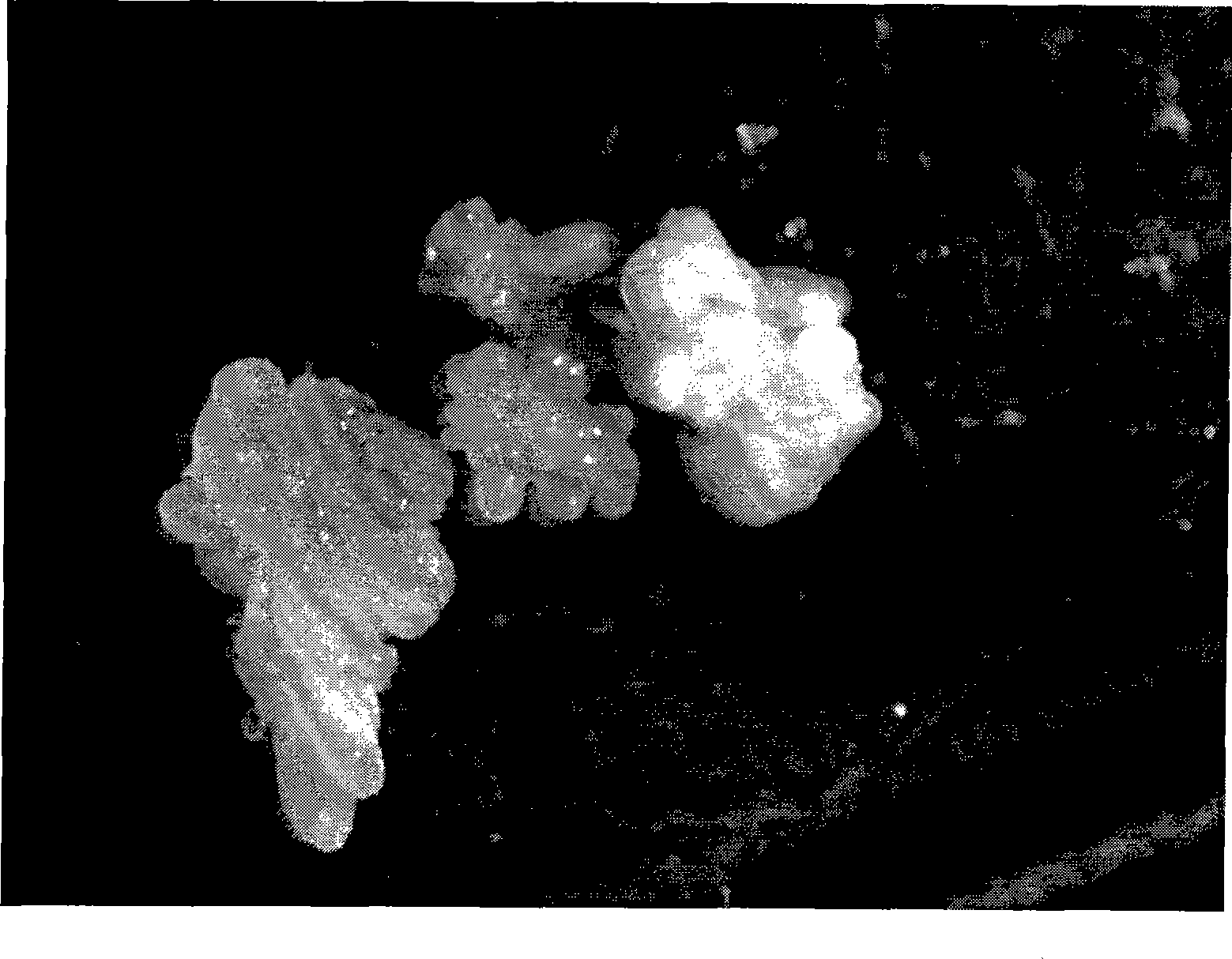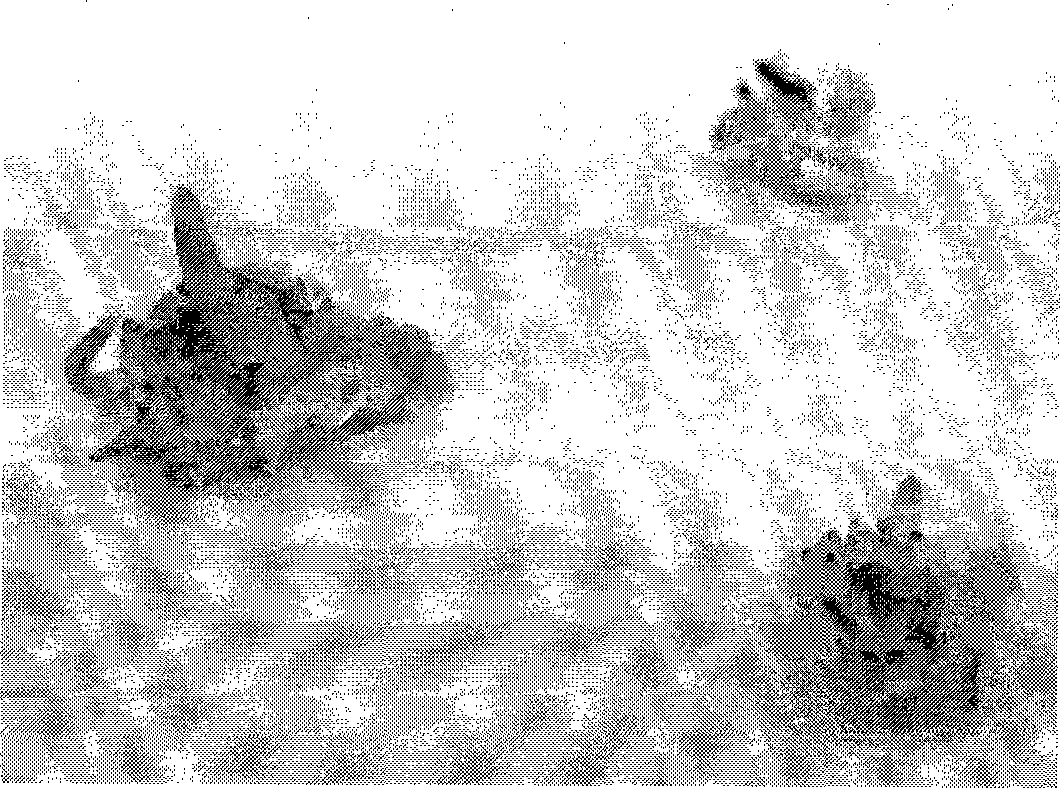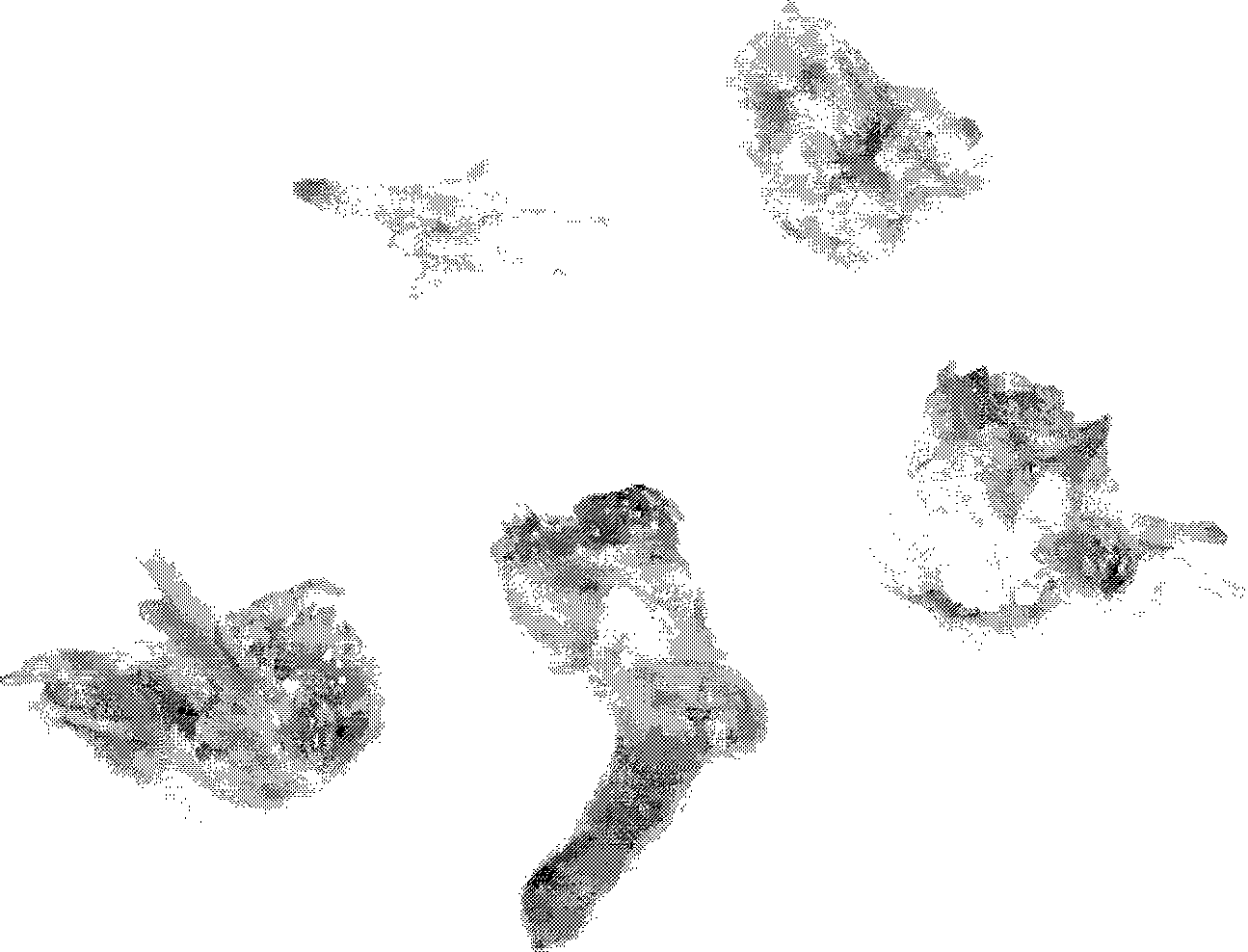Lilyturf root embryoid induction and culture method
A culture method and embryoid body technology, applied in the field of plant cell engineering, can solve the problems of failing to achieve detoxification of seedlings, purification and rejuvenation, not being a breeding material, and a long culture period, achieving easy regeneration, improving seedling rate, The effect of stable offspring
- Summary
- Abstract
- Description
- Claims
- Application Information
AI Technical Summary
Problems solved by technology
Method used
Image
Examples
Embodiment 1
[0035]Take a healthy plant of dwarf sagegrass, cut off the root and the old stem section at the base, and peel off the old leaves in turn, leaving only 6 young leaves wrapped around the tip of the stem, first rinse it under tap water for about 1-2 hours, and then wash it with Soak in solution for 10 minutes, then rinse several times with tap water, rinse with sterile water 4 to 6 times, disinfect with 2% sodium hypochlorite for 15 minutes, and dry the surface with sterile paper; put the material into 0.1% Disinfect in mercuric chloride solution for 8 minutes, rinse with sterile water for 8 to 10 times, peel off the outer leaves, and inoculate the young explants wrapped in shoot tips in 1 / 2MS+GA ( 5mg / L) + BA (3mg / L) + IBA (0.1mg / L) + sucrose 20g / L + 0.7% agar medium (pH 5.8-6.0, the same below), 3 in each bottle, Aseptic culture, the temperature is 25±2°C during the day and 20±2°C at night, the light intensity is 500-10001x., the light time is 10-14h, and the shoot tip differe...
Embodiment 2
[0037] Take a healthy plant of slender-leafed grass, cut off the roots and old stems at the base, and peel off the old leaves one by one, leaving only 6 young leaves wrapped around the tip of the stem, first rinse it under tap water for 1-2 hours, and then wash it with detergent Soak in the solution for 10 minutes, then rinse several times with tap water, rinse with sterile water 4 to 6 times, disinfect with 2% sodium hypochlorite for 10 minutes, and dry the surface with sterile paper; put the material into 0.1% L Sterilize in mercury solution for 15 minutes, rinse with sterile water for 8 to 10 times, peel off the outer leaves, and inoculate the young explants wrapped in shoot tips in 1 / 2MS+GA (3mg / L) + BA (2mg / L) + IBA (0.1mg / L) + sucrose 20g / L + 0.7% agar medium (pH 5.8-6.0, the same below), 3 pieces per bottle, no For bacterial culture, the temperature is 25±2°C during the day and 20±2°C at night, the light intensity is 500-1000lx., the light time is 10-14h, and the shoot...
Embodiment 3
[0039] Carry out the cultivation of aseptic seedlings by the same embodiment of dwarf sage grass and slender sage grass (substratum 1 / 2MS+GA (4mg / L)+BA (1mg / L)+IBA ( 0.1mg / L)+white sugar 20g / L+0.7% agar), primary embryoid bodies (medium MS+BA(0.1mg / L)+NAA(0.2mg / L)+2.4D(1mg / L)+sucrose 30g / L+0.7% agar) and secondary embryoid bodies (medium MS+BA (4mg / L)+NAA (0.2mg / L)+sucrose 30g / L+0.7% agar) induction and subculture. What needs to be pointed out here is that Grass nigra is a species that is more difficult to regenerate. The inventor improved the medium with SH, B 5 and N 6 The medium was basic medium, and different types of hormones were added to it to induce embryoid bodies, but the ideal embryoid body incidence rate could not be obtained. However, using MS primary embryoid body medium, it takes at least three months for the initial sterile seedling explants to grow primary embryoid bodies, and a large number of embryoid bodies will be produced in the primary embryoid body me...
PUM
 Login to View More
Login to View More Abstract
Description
Claims
Application Information
 Login to View More
Login to View More - R&D
- Intellectual Property
- Life Sciences
- Materials
- Tech Scout
- Unparalleled Data Quality
- Higher Quality Content
- 60% Fewer Hallucinations
Browse by: Latest US Patents, China's latest patents, Technical Efficacy Thesaurus, Application Domain, Technology Topic, Popular Technical Reports.
© 2025 PatSnap. All rights reserved.Legal|Privacy policy|Modern Slavery Act Transparency Statement|Sitemap|About US| Contact US: help@patsnap.com



